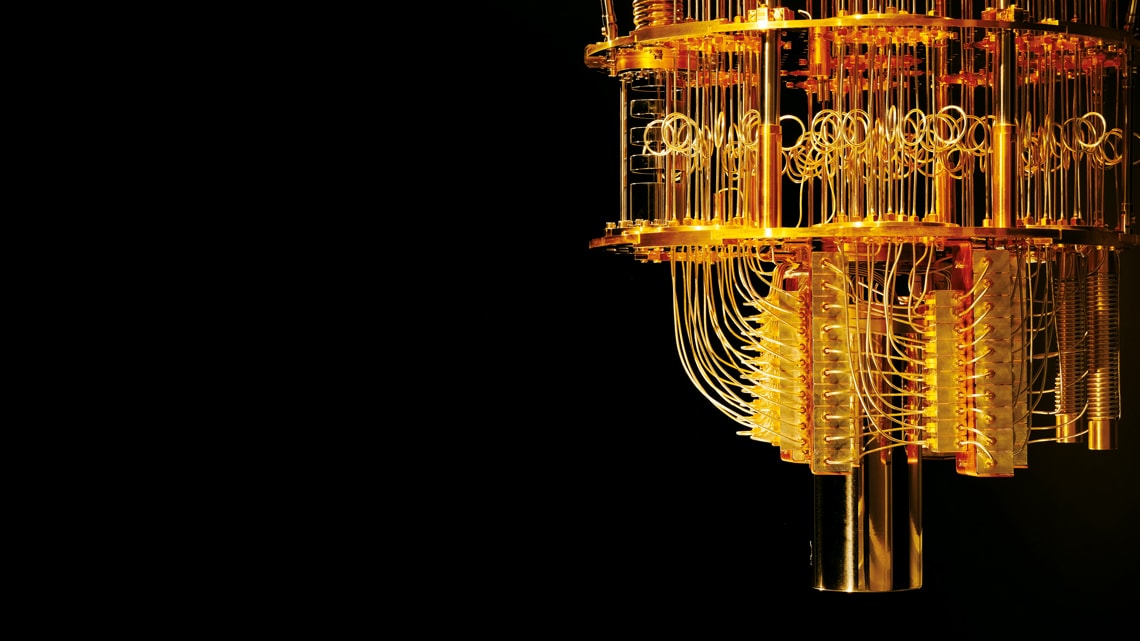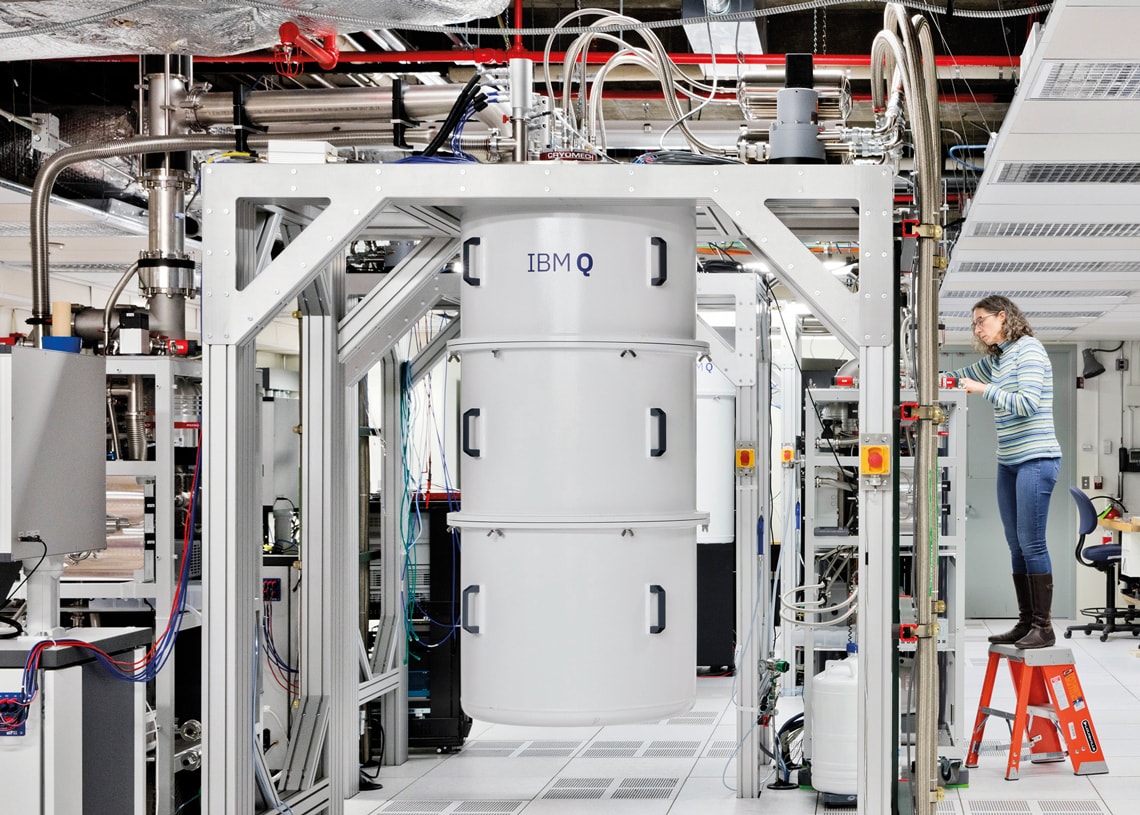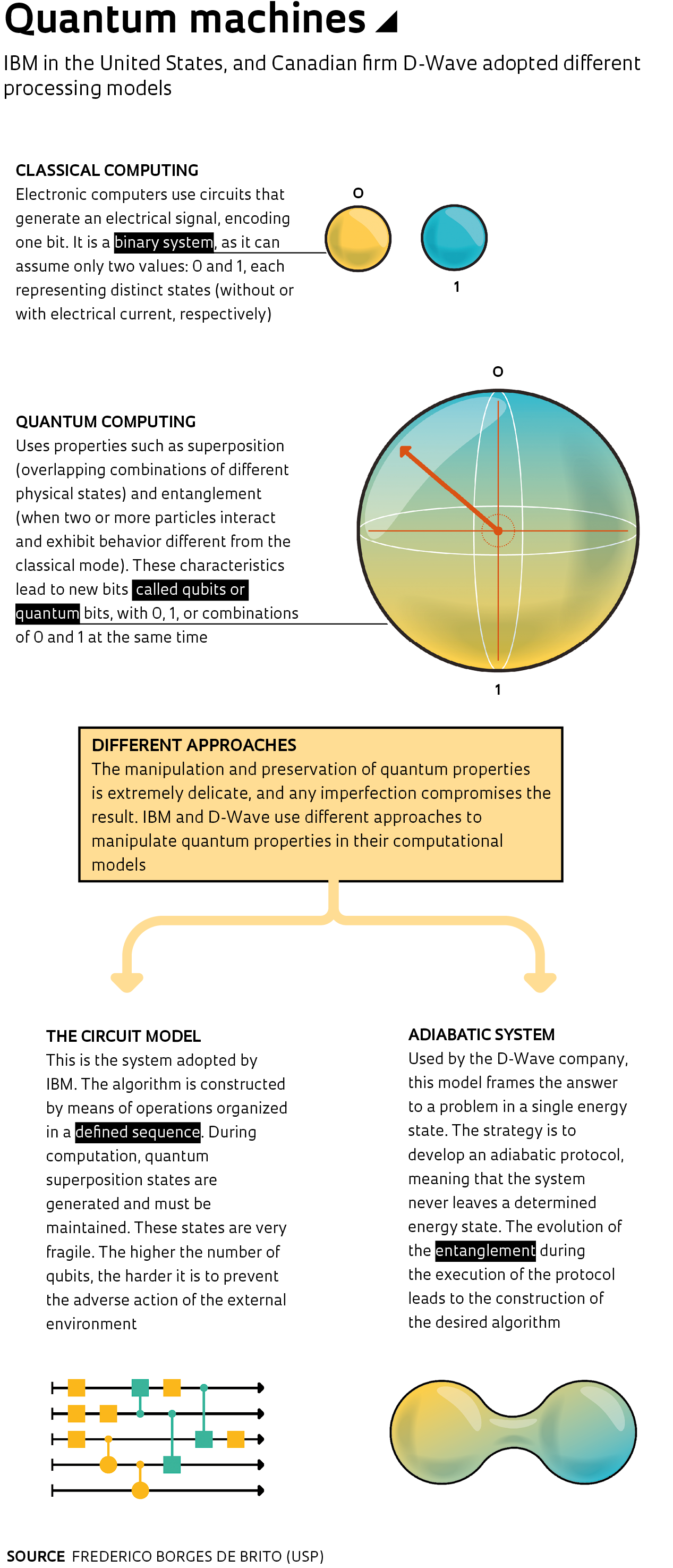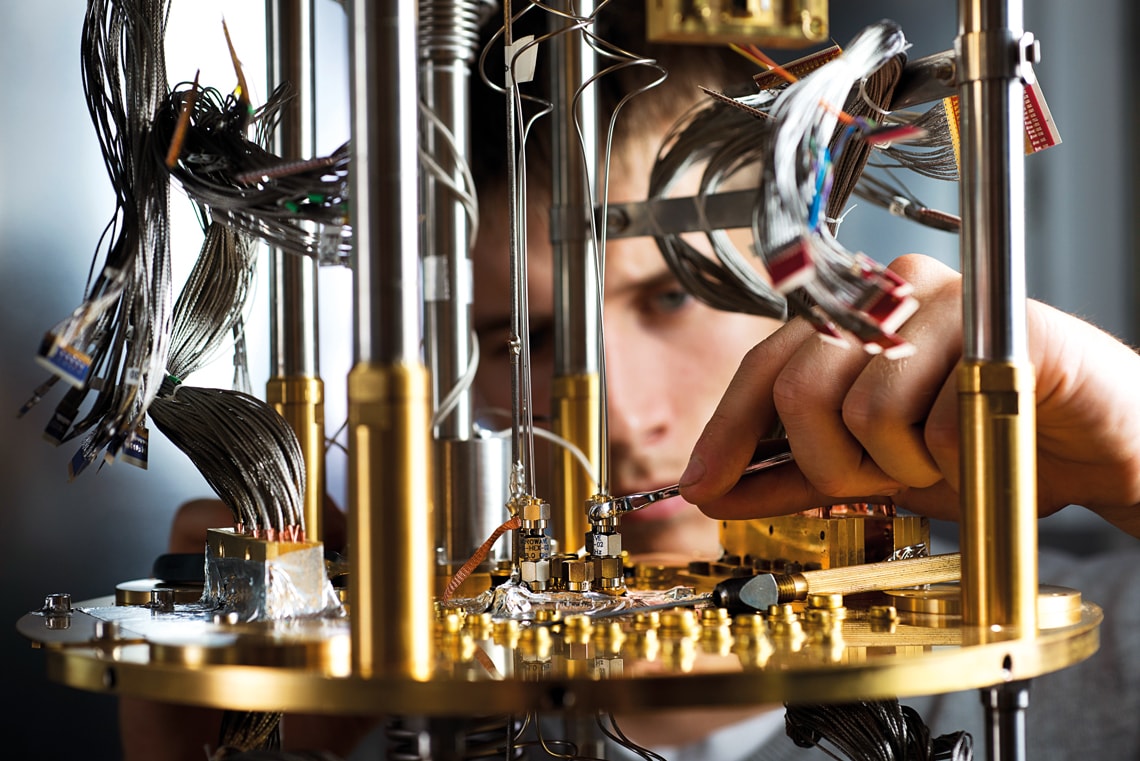Quantum computers, which utilize the properties of subatomic particles in their processing systems, are finally moving from research labs to the commercial world. An important move in this direction was recently made in the United States by the IBM corporation, with the launch of the IBM Q System One. The first universal quantum computer available to the public, it is capable of various types of operations. This is an important point. Although Canadian company D-Wave Systems introduced its pioneering quantum processor just over a decade ago, their equipment performs only specific tasks, such as solving optimization problems, i.e., choosing the best solution from countless variables.
In late September, the British journal Financial Times reported that Google may have reached “quantum supremacy,” the point at which a quantum computer could perform an operation that a traditional machine would not be capable of. According to their report, the Google-designed Sycamore chip has performed a calculation that today’s most powerful supercomputer, the IBM Summit, would take 10,000 years to accomplish—in just over three minutes. An article detailing the experiment should soon be published by Google researchers in a science journal.
The quantum computer’s trajectory from theory to laboratory has taken many years, and is still far from arriving at a satisfactory stage, even with the recent advances from IBM and D-Wave. In the 1980s, American physicists Paul Benioff and Richard Feynman (winner of the 1965 Nobel Prize) demonstrated, along with Israeli scientist David Deutsch, that quantum mechanics could give rise to a new kind of computing. At the nanoscale, particles have particular properties such as superposition—the combined overlapping of different states—and entanglement, when two or more particles interact and exhibit behavior distinct from what would be expected in the classical mode.
While in classical computation bits (or binary digits) can assume only one value, 0 or 1, where 0 represents a signal without electrical current and 1 a signal with current, quantum computing works with 0, 1, and combinations of 0 and 1 at the same time. These are the quantum bits, or qubits.
These features allow the quantum computer to perform simultaneous calculations faster—by orders of magnitude—than today’s supercomputers. As theoretical physicist Frederico Borges de Brito of the São Carlos Institute of Physics at the University of São Paulo (IFSC-USP) explains, the purpose of quantum computing is not to replace classical computers, but rather to offer a new way to solve problems, such as complex simulations and probabilistic questions that today’s computers have difficulty answering. Brito worked on equipment design at IBM during his postdoctoral internship from 2006 to 2008, and as a researcher at D-Wave from 2008 to 2009.
“Factoring a large prime number is a task that can take years on a classical computer. With a quantum computer, it could potentially only take seconds,” explains Brito. With a quantum computer, cracking cryptographic codes used for banking security may no longer be a challenge. Another operation for which these new machines would be more efficient is in simulating the behavior of molecules. This is expected to have advantages in protein folding (the chemical process in which proteins assume functional configurations), generating new possibilities for the development of pharmaceutical products. Nanotechnology and research on new materials should also benefit, as would the financial sector, where quantum computing could be used for analyzing investment portfolios and the behavior of corporate shares on stock exchanges over time.
Building a quantum computer, however, is a complex task. Current machines take up a ten-square-meter room and their qubits are highly unstable and susceptible to losing their integrity when exposed to nature. Any interference, such as vibration or noise from other power sources may lead to calculation errors. This means they must be isolated from their environment. To maintain their properties, qubits operate at a temperature of -273.15º Celsius, which is very close to absolute zero. The more qubits, the more sophisticated the engineering required. IBM and D-Wave have come up with different solutions to address the problem.
The IBM Q System One is a 20-qubit machine that combines quantum and classical computing systems. The computer, introduced to the public in January, is available in the cloud for commercial and scientific use. According to Ulisses Mello, lab director at IBM Research–Brazil, the company’s goal with the equipment is to show that even though its processing capacity is still limited, the quantum computer is viable and available to the public. It is not just a lab experiment.
At its New York research center the company works with 50- and 70-qubit versions. It’s still a low number, Mello admits, but it’s a step on a path intended to reach a thousand. “Reaching 150 or 200 qubits, where there could already be significant applications in many areas, may not be too far away,” the executive says. “Modeling the caffeine molecule takes something like 1048 bits, something impossible today. With 160 qubits it will be possible,” he says.
IBM is making a free cloud platform called the IBM Q Experience available to the public, which already has over 100,000 users. The company also has more than 60 business partners who are trying out the technology through the IBM Q Network. Auto manufacturer Daimler, the ExxonMobil corporation, and investment banking firm JPMorgan Chase & Co. are among them. There are no Brazilian companies using the network at this time.



